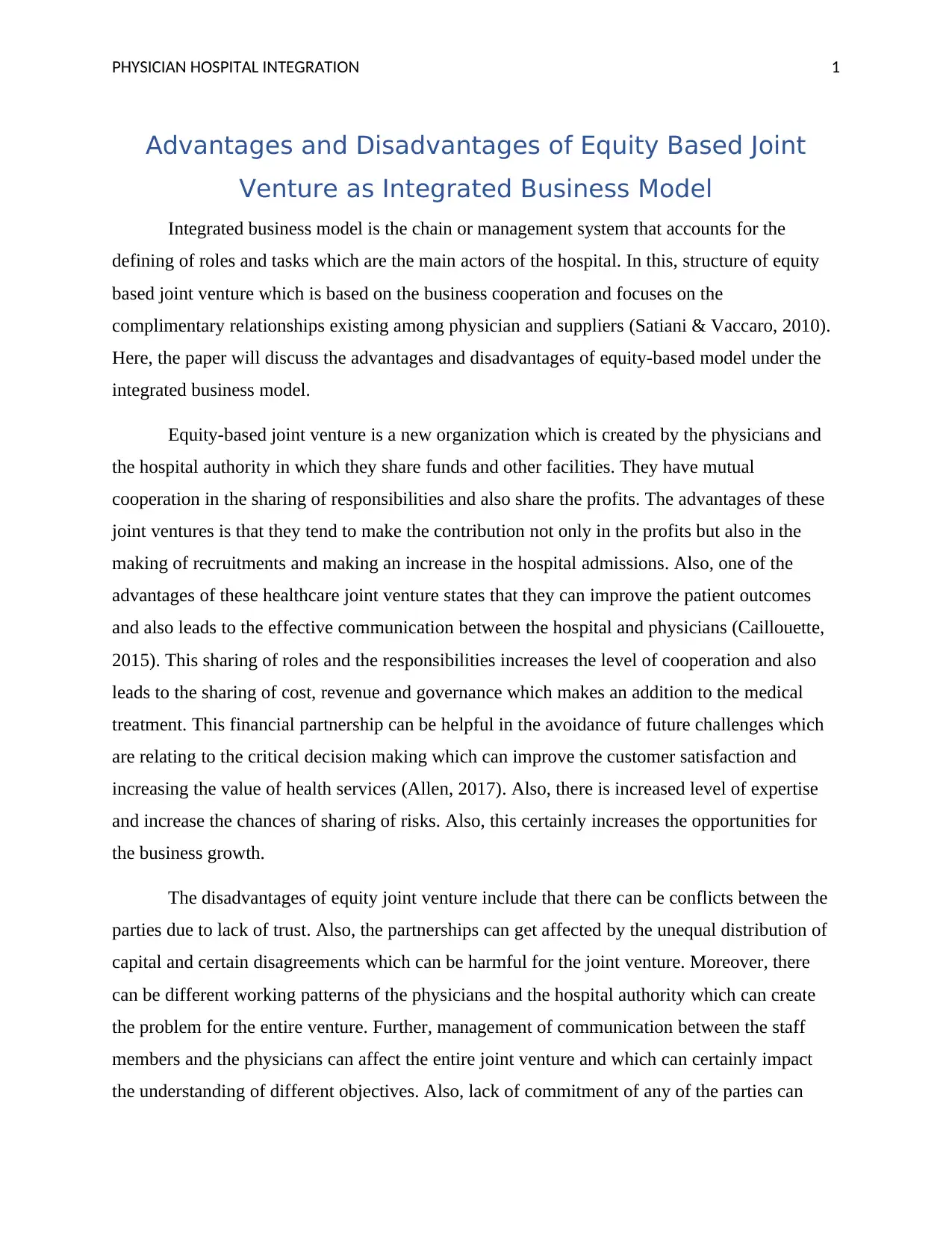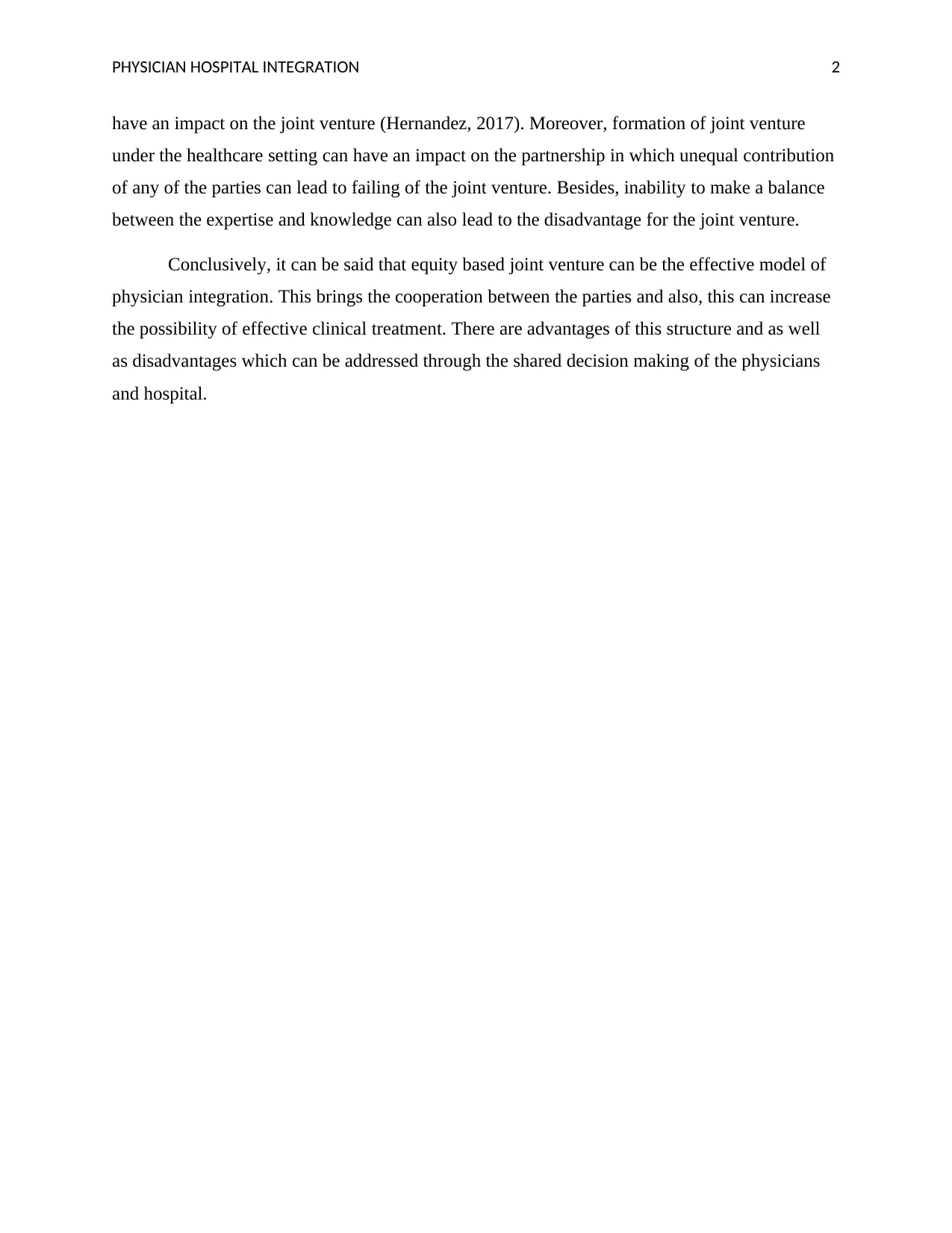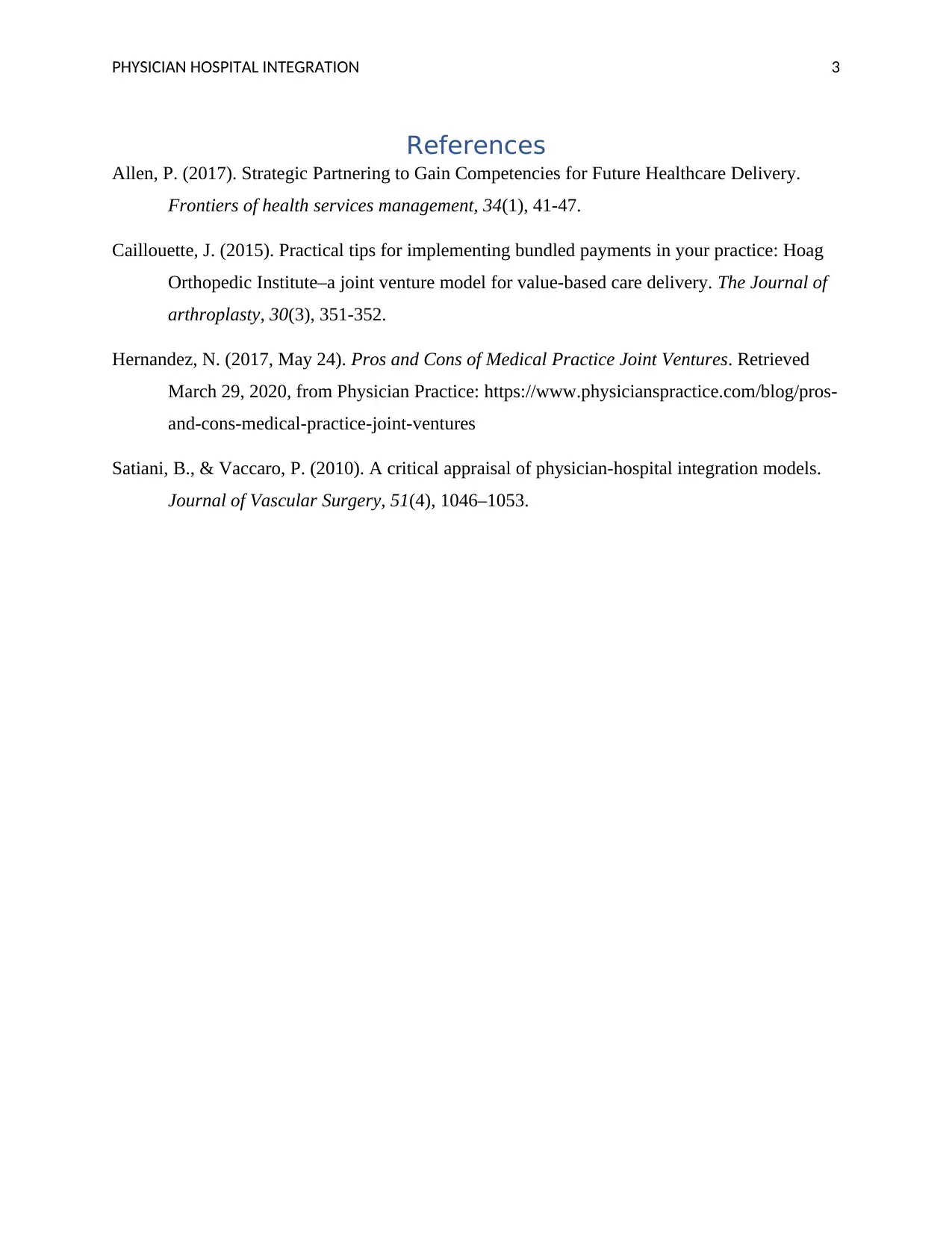Physician Hospital Integration: Equity-Based Joint Venture Analysis
VerifiedAdded on 2022/09/06
|4
|718
|16
Report
AI Summary
This report examines the advantages and disadvantages of equity-based joint ventures within the context of physician hospital integration, an integrated business model. The paper defines equity-based joint ventures as collaborations between physicians and hospitals, where resources and responsibilities are shared. It highlights the benefits, such as increased profits, improved patient outcomes, enhanced communication, shared costs, and increased expertise. Conversely, the report acknowledges potential drawbacks, including conflicts due to lack of trust, unequal capital distribution, differing work patterns, communication challenges, and lack of commitment. The conclusion emphasizes that while equity-based joint ventures can be effective, the success of the model hinges on shared decision-making between physicians and hospitals to address potential disadvantages and maximize the benefits of cooperation in clinical treatment.
1 out of 4











![[object Object]](/_next/static/media/star-bottom.7253800d.svg)